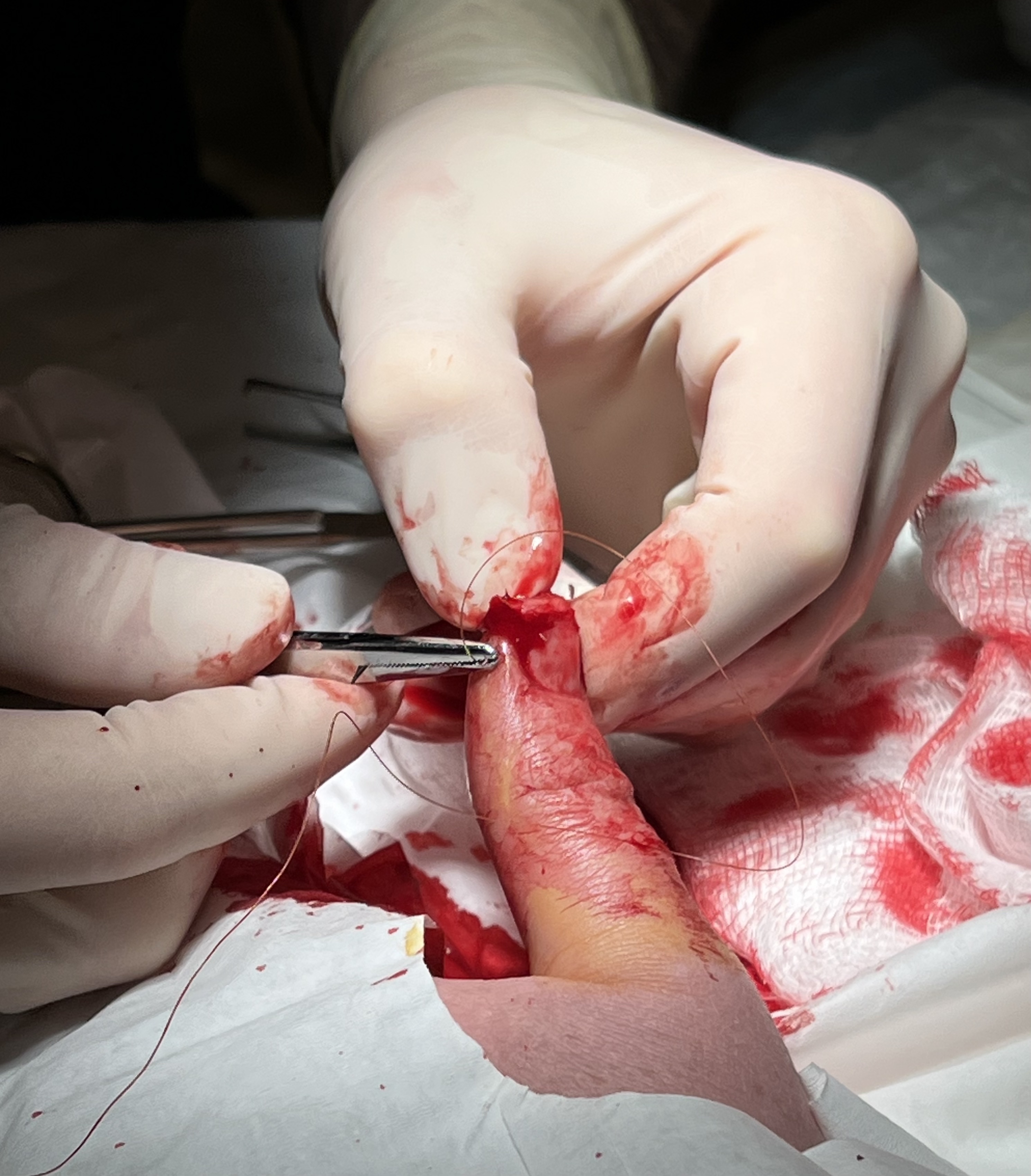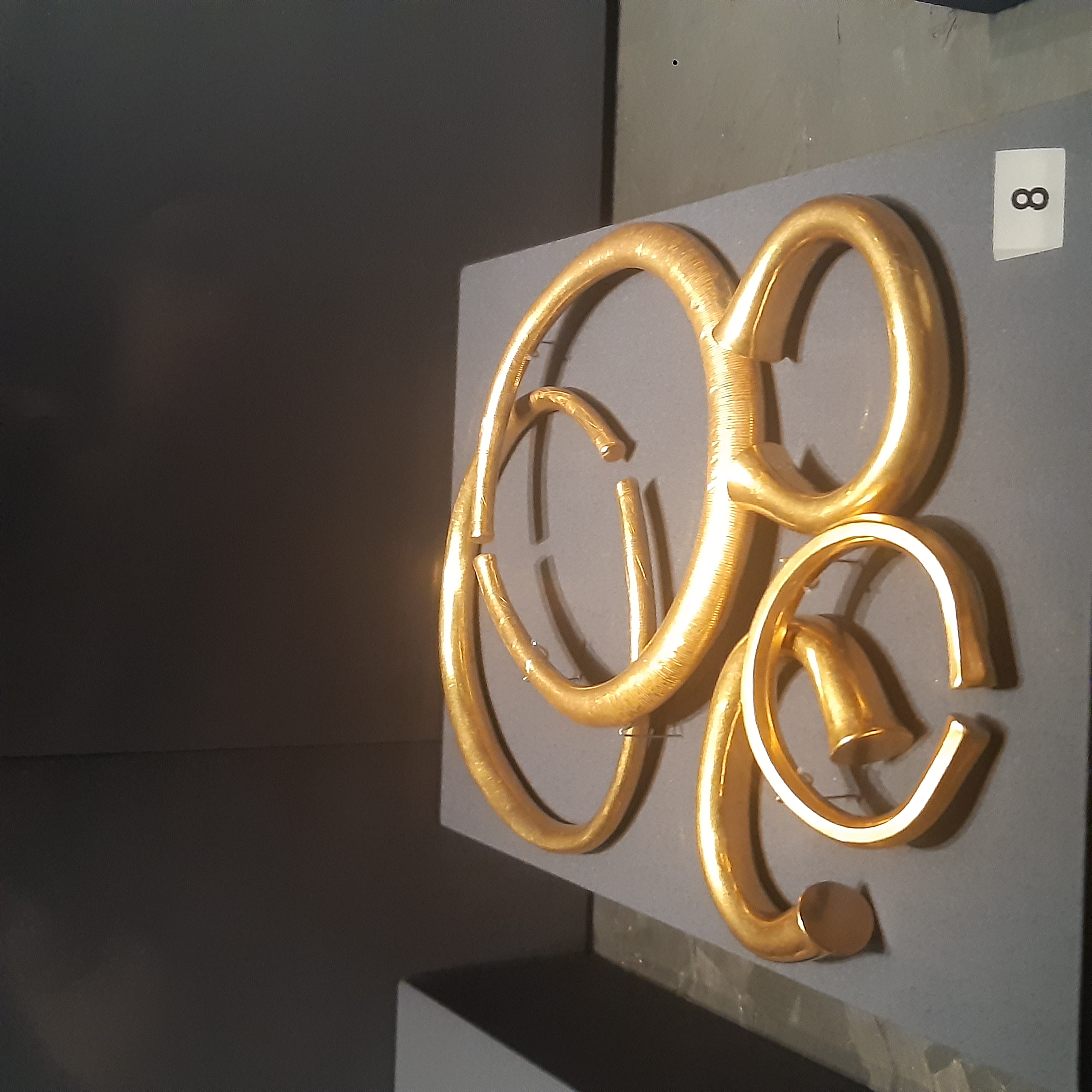|
B-Lynch Suture
The B-Lynch suture or B-Lynch procedure is a form of compression Surgical suture, suture used in obstetrics. It is used to mechanically compress an Uterine atony, atonic uterus in the face of severe postpartum hemorrhage. It was developed by Christopher B-Lynch, a consultant obstetrician and gynaecological surgeon based at Milton Keynes General Hospital, Milton Keynes, Buckinghamshire, England. B-Lynch was born in 1947 in Sierra Leone with the birth name of Christopher Balogun-Lynch. The technique was first described in 1997. It can stop postpartum hemorrhage without the need for pelvic surgery and potentially preserving fertility. It is regarded as "the best form of surgical approach for controlling atonic PPH as it helps in preserving the anatomical integrity of the uterus." Absorbable suture can be left in situ, and would typically not lead to problems with future pregnancies. References {{Obstetrical_procedures Obstetrical procedures ... [...More Info...] [...Related Items...] OR: [Wikipedia] [Google] [Baidu] |
Surgical Suture
A surgical suture, also known as a stitch or stitches, is a medical device used to hold Tissue (biology), body tissues together and approximate wound edges after an injury or surgery. Application generally involves using a Sewing needle, needle with an attached length of thread (yarn), thread. There are numerous types of suture which differ by needle shape and size as well as thread material and characteristics. Selection of surgical suture should be determined by the characteristics and location of the wound or the specific body tissues being approximated. In selecting the needle, thread, and suturing technique to use for a specific patient, a medical care provider must consider the tensile strength of the specific suture thread needed to efficiently hold the tissues together depending on the mechanical and shear forces acting on the wound as well as the thickness of the tissue being approximated. One must also consider the elasticity of the thread and ability to adapt to differe ... [...More Info...] [...Related Items...] OR: [Wikipedia] [Google] [Baidu] |
Obstetrics
Obstetrics is the field of study concentrated on pregnancy, childbirth and the postpartum period. As a medical specialty, obstetrics is combined with gynecology under the discipline known as obstetrics and gynecology (OB/GYN), which is a surgical field. Main areas Prenatal care Prenatal care is important in screening for various complications of pregnancy. This includes routine office visits with physical exams and routine lab tests along with telehealth care for women with low-risk pregnancies: Image:Ultrasound_image_of_a_fetus.jpg, 3D ultrasound of fetus (about 14 weeks gestational age) Image:Sucking his thumb and waving.jpg, Fetus at 17 weeks Image:3dultrasound 20 weeks.jpg, Fetus at 20 weeks First trimester Routine tests in the first trimester of pregnancy generally include: * Complete blood count * Blood type ** Rh-negative antenatal patients should receive RhoGAM at 28 weeks to prevent Rh disease. * Indirect Coombs test (AGT) to assess risk of hem ... [...More Info...] [...Related Items...] OR: [Wikipedia] [Google] [Baidu] |
Uterine Atony
Uterine atony is the failure of the uterus to contract adequately following delivery. Contraction of the uterine muscles during labor compresses the blood vessels and slows flow, which helps prevent hemorrhage and facilitates coagulation. Therefore, a lack of uterine muscle contraction can lead to an acute hemorrhage, as the vasculature is not being sufficiently compressed. Text was copied from this source, which is available under Creative Commons Attribution 4.0 International License Uterine atony is the most common cause of postpartum hemorrhage, which is an emergency and potential cause of fatality. Across the globe, postpartum hemorrhage is among the top five causes of maternal death. Recognition of the warning signs of uterine atony in the setting of extensive postpartum bleeding should initiate interventions aimed at regaining stable uterine contraction. Risk factors There are many risk factors for uterine atony and several are due to the type of labor a mother experience ... [...More Info...] [...Related Items...] OR: [Wikipedia] [Google] [Baidu] |
Postpartum Hemorrhage
Postpartum bleeding or postpartum hemorrhage (PPH) is often defined as the loss of more than 500 ml or 1,000 ml of blood following childbirth. Some have added the requirement that there also be signs or symptoms of low blood volume for the condition to exist. Signs and symptoms may initially include: an tachycardia, increased heart rate, postural hypotension, feeling faint upon standing, and an increased breathing rate. As more blood is lost, the patient may feel cold, blood pressure may drop, and they may become restless or unconscious. In severe cases circulatory collapse, disseminated intravascular coagulation and death can occur. The condition can occur up to twelve weeks following delivery in the secondary form. The most common cause is uterine atony, poor contraction of the uterus following childbirth. Retained placenta, Not all of the placenta being delivered, a tear of the uterus, or poor blood clotting are other possible causes. It occurs more commonly in tho ... [...More Info...] [...Related Items...] OR: [Wikipedia] [Google] [Baidu] |
Milton Keynes General Hospital
Milton Keynes University Hospital is a district general hospital serving the City of Milton Keynes and the surrounding area of Buckinghamshire, Northamptonshire, Bedfordshire and Oxfordshire. It is located in the Eaglestone neighbourhood, and opened in 1984. It is managed by Milton Keynes University Hospital NHS Foundation Trust. The hospital has an association with the University of Buckingham Medical School. History Although Milton Keynes built up rapidly in the 1960s and 1970s, its growing population had to rely on Stoke Mandeville Hospital and Northampton General Hospital. A campaign "Milton Keynes is Dying for a Hospital" was mounted in the 1970s, leading to the construction of a four-ward community hospital that opened in 1979. At the opening of the shopping building in September 1979, Lord Campbell successfully lobbied the Prime Minister for a hospital appropriate to the planned population of the city and work began on the construction of the main hospital in 1980. The ... [...More Info...] [...Related Items...] OR: [Wikipedia] [Google] [Baidu] |
Milton Keynes
Milton Keynes ( ) is a city status in the United Kingdom, city in Buckinghamshire, England, about north-west of London. At the 2021 Census, the population of Milton Keynes urban area, its urban area was 264,349. The River Great Ouse forms the northern boundary of the urban area; a tributary, the River Ouzel, meanders through its linear parks and balancing lakes. Approximately 25% of the urban area is parkland or woodland and includes two Site of Special Scientific Interest, Sites of Special Scientific Interest (SSSIs). The city is made up of many different districts. In the 1960s, the government decided that a further generation of new towns in the United Kingdom, new towns in the South East England , south east of England was needed to relieve housing congestion in London. Milton Keynes was to be the biggest yet, with a population of 250,000 and area of . At designation, its area incorporated the existing towns of Bletchley, Fenny Stratford, Wolverton and Stony Stratford, ... [...More Info...] [...Related Items...] OR: [Wikipedia] [Google] [Baidu] |
Sierra Leone
Sierra Leone, officially the Republic of Sierra Leone, is a country on the southwest coast of West Africa. It is bordered to the southeast by Liberia and by Guinea to the north. Sierra Leone's land area is . It has a tropical climate and environments ranging from savannas to rainforests. As of the 2023 census, Sierra Leone has a population of 8,460,512. Freetown is its capital and largest city. Sierra Leone is a presidential republic, with a unicameral parliament and a directly elected president. It is a secular state. Its Constitution of Sierra Leone, constitution provides for the separation of state and religion and freedom of conscience. Muslims constitute three-quarters of the population, and there is a significant Christian minority. Notably, religious tolerance is very high. Sierra Leone's current territorial configuration was established in two phases: in 1808, the coastal Sierra Leone Colony and Protectorate, Sierra Leone Colony was founded as a place to resettle retu ... [...More Info...] [...Related Items...] OR: [Wikipedia] [Google] [Baidu] |



